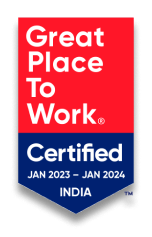As we move into 2025, AWS re:Invent continues to be a beacon for cloud innovation, showcasing groundbreaking advancements that will shape the future of technology. Here's a glimpse into what trends and technologies are set to dominate the cloud landscape in 2025, based on insights from AWS re:Invent 2024.
1. Generative AI at Scale
Generative AI remains a central focus, with AWS unveiling enhancements to its Bedrock service. Over 100 foundation models, multimodal AI integration, and intelligent tools for efficient deployments were highlighted. These developments are designed to make generative AI adoption cost-effective and scalable, especially for applications in healthcare, finance, and media.
Notable announcements include the Nova AI model suite:
Nova Micro: A low-latency, cost-efficient, text-only model.
Nova Lite: Designed for multimodal AI applications, supporting text, image, and video processing.
Nova Pro: A versatile multimodal model suitable for general use.
Nova Premier: Advanced reasoning capabilities for solving complex problems.
Nova Canvas: Professional-grade image generation tools.
Nova Reel: Simplified high-quality video creation.
These innovations aim to make generative AI accessible and transformative for businesses across all sectors. SageMaker also received significant updates, including automated workflows for model training and deployment. These advancements empower organizations to leverage cloud-based AI infrastructure without the complexity of managing extensive resources.
2. Hybrid Cloud and Quantum Computing
Hybrid cloud continues to gain traction as enterprises seek flexible, scalable solutions. The integration of Nvidia CUDA-Q with AWS Braket showcases how quantum and classical computing can work in tandem to solve complex problems. This hybrid model is expected to drive innovation in fields like cryptography, materials science, and financial modelling.
AWS further demonstrated its infrastructure prowess with the introduction of Trn2 UltraServers, delivering 83.2 petaflops of computing power. EC2 Trn2 Instances, powered by Trainium2, offer 30–40% better price performance, making it easier for businesses to run large-scale AI workloads efficiently.
3. Cloud-Driven Robotics and Simulation
AWS is pushing the boundaries of robotics development with platforms like Nvidia's Isaac Sim. These tools, hosted on AWS, allow for the creation of synthetic data and simulation environments, enabling developers to train robotic systems more efficiently. Such advancements reduce the time and cost associated with physical prototyping.
AI/ML innovations also include Bedrock Agents, which enable seamless multi-agent collaboration, and Bedrock Model Distillation, delivering models that are five times faster and 75% cheaper. These advancements make AI-driven simulations and collaborative robotics development more accessible to enterprises.
4. Developer-Centric Innovations
The Amazon Q Developer is transforming software development by automating tasks like documentation, code reviews, and unit testing. These tools, embedded into IDEs and platforms like GitLab, boost developer productivity and streamline workflows.
For businesses, Amazon QuickSight now integrates with Amazon Q, unifying business data for smarter decision-making. Its ability to expand data index capabilities with ISVs enhances the accessibility and utility of cloud-stored data, further cementing the role of AWS in enterprise cloud strategies.
5. Sustainability in Cloud Infrastructure
AWS is leading sustainability efforts with innovations like liquid-cooled data centres designed to support high-performance workloads. These centres optimize energy use, meeting the increasing demand for resource-intensive AI applications while minimizing environmental impact. Such initiatives align with global efforts to create greener cloud solutions.
6. Customer-Centric Cloud Experiences
Enhanced tools like Amazon Connect, now integrated with generative AI features, are helping businesses deliver superior customer experiences. These capabilities are already driving cost reductions and efficiency gains in global enterprises.
AWS also highlighted its work with DynamoDB Global Tables and Aurora DSQL, offering scalable, distributed databases that ensure availability and performance for organizations with a global footprint.
7. Edge Computing and Distributed Cloud
The growing importance of edge computing was evident with AWS Outposts and Local Zones. These solutions bring cloud capabilities closer to where data is generated, reducing latency and enabling real-time processing. Industries like manufacturing, retail, and IoT applications stand to benefit significantly from this distributed cloud approach.
8. Industry-Specific Cloud Applications
AWS's focus on vertical-specific solutions was evident with the rollout of tailored applications for manufacturing, healthcare, and logistics. For example, cloud-based platforms are optimizing supply chains, enhancing customer experiences, and enabling advanced analytics in real time. These innovations demonstrate the versatility of cloud computing in addressing diverse business needs.
Looking Ahead to 2025
AWS re:Invent 2024 has once again demonstrated why it is the premier event for cloud innovation. The advancements in generative AI, hybrid cloud models, quantum computing, and sustainable infrastructure showcase the immense potential of cloud computing in 2025 and beyond. These innovations are set to redefine industries, enabling businesses to harness the full power of the cloud for growth and efficiency.

CloudKeeper was proud to be part of this transformative event. As a trusted partner for cloud cost optimization, we are excited to share these cutting-edge updates and help your organization unlock the maximum value from your cloud investments. Choose CloudKeeper for your cloud optimization needs and experience unparalleled expertise in simplifying your cloud journey.










